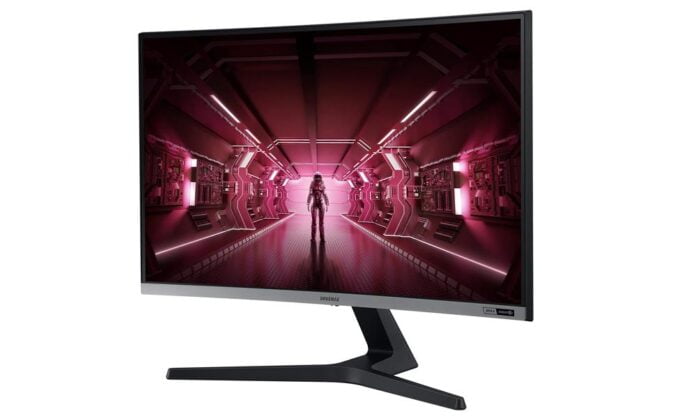4K gaming monitors are becoming more and more popular amongst gamers, especially as consoles, desktops and laptops alike are becoming more capable of running games at 4K. But when there are cheaper 1080p and 1440p monitors available, are 4K monitors really worth it for gaming? Let’s take a look.
What exactly is 4K Gaming Monitor?
If you’re relatively new to the world of gaming, you may be wondering what exactly a 4K monitor is.
Sure, a 4K monitor is “better” than an HD or QHD monitor, but in what way?
Put simply, a 4K monitor has more pixels than alternative types of monitors. For the most part, a 4K monitor will have 3,840 x 2,160 pixels.
Because of this high number of pixels, a 4K monitor will offer a sharper, clearer picture that possesses far more detail compared to a monitor with fewer pixels, such as 1080p or 1440p.
It’s important to note, however, that 4K gaming monitors work better at larger screen sizes. For example, 4K on a 15-inch monitor display won’t be particularly noticeable. On the other hand, once you start looking at displays of 27-inches or larger, 4K makes a noticeable difference to image quality.
What sort of system do you need to play games on a 4K monitor?
Gaming at 4K isn’t as simple as buying a 4K monitor; you actually need a computer that’s capable of playing games at 4K too.
4K gaming is a fairly new thing, as systems that can play games at 4K just started to come out on the market recently.
If you’re determined to play games at 4K, then you’re going to need a system with an absolutely top-of-the-range graphics card.
At present, the only graphics cards that are realistically capable of playing games at 4K are the NVIDIA GeForce RTX 3090 and NVIDIA GeForce RTX 3090 Ti. For the former, you’ll have to pay around £1,400, whilst for the latter, expect to pay around £1,800.
As you can see, gaming at 4K doesn’t come cheap!
What should you look for in a 4K monitor for gaming?
If you have a system that’s capable of 4K gaming, then you’re going to want to buy a monitor that has all of the features you need to achieve a great gaming experience.
But, what are those features? You’ll find them below.
DisplayPort
One of the key features to look for in a 4K monitor is DisplayPort. This is a newer input type, which is better for gaming.
This is because DisplayPort supports higher resolutions, higher refresh rates, and more bandwidth than alternative input types like HDMI.
Technologies for adaptive synchronization
To get the most out of your gaming, you’ll need a 4K monitor with adaptive sync technologies.
These are technologies that are designed to align your computer’s graphics card output with what’s displayed on the monitor. This produces a much smoother visual experience and reduces issues like ghosting and tearing, which can occur when a monitor struggles to display a graphics card’s output.
There are two types of adaptive sync technology in use on 4K gaming monitors at present; FreeSync and G-Sync.
FreeSync is AMD’s version of this technology and will only work with AMD graphics cards. Likewise, G-Sync is NVIDIA’s version of this technology and will only work with NVIDIA graphics cards. The two technologies are not cross-compatible.
VESA mount
If you want to have a great gaming setup at home, then you’ll want to buy a 4K monitor that has a VESA mount.
A VESA mount will allow you to easily affix your monitor to a monitor arm and desk mount. This will enable you to easily move your screen and set it at the perfect height, angle, and position for gaming.
This is especially important if you’re intending to play for long periods of time.
HDR support
HDR, which stands for High Dynamic Range, is a standard that allows a monitor to provide improved contrast, accurate colors, and more vivid, bold images.
The majority of 4K gaming monitors support HDR. However, it’s worth noting that there are a number of different types of HDR. These include:
- HDR10 is the current standard version of HDR.
- Dolby Vision: Dolby’s proprietary version of HDR, which has a higher brightness ceiling of 4,000 nits compared to HDR10’s 1,000 nits.
- HDR10+—this is an updated version of HDR10 which uses dynamic metadata rather than static metadata like HDR10.
- Dolby Vision IQ: This is an enhanced version of Dolby Vision which uses a light sensor to adjust the HDR picture based on the brightness in your room.
- HLG: HLG, which stands for hybrid log gamma, is a format which has been developed to try and make HDR content easier to broadcast.
- Technicolor HDR: this is a technology that can upscale SDR content to HDR.
Conclusion
Whether a 4K monitor is worth it for gaming is very much dependent upon your priorities and your budget.
If you’re willing to spend considerable sums of money on graphics cards and want to achieve the absolute best visual experience for your games, then a 4K monitor is certainly worth investing in.
However, if you’re happy with a less spectacular visual experience, such as HD, and don’t want to shell out thousands of pounds, then a 4K monitor may not be right for you.
Check out: 2K or 4K? What’s Better on a Gaming Monitor Screen

